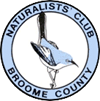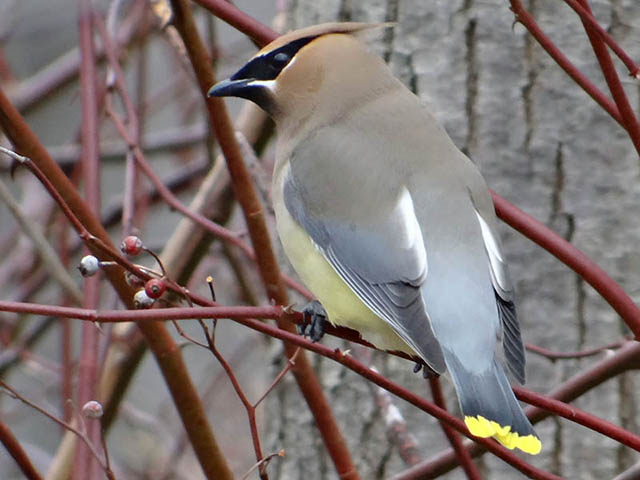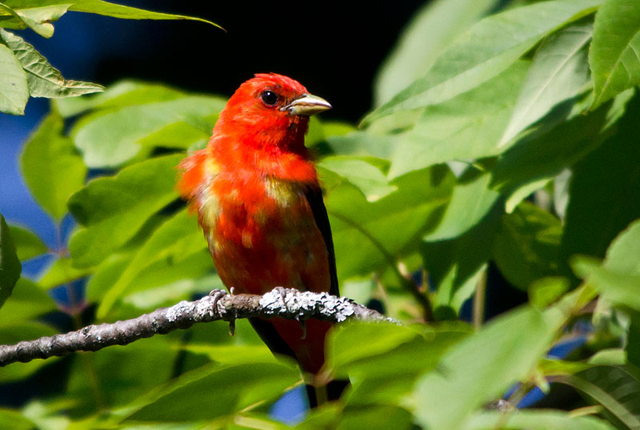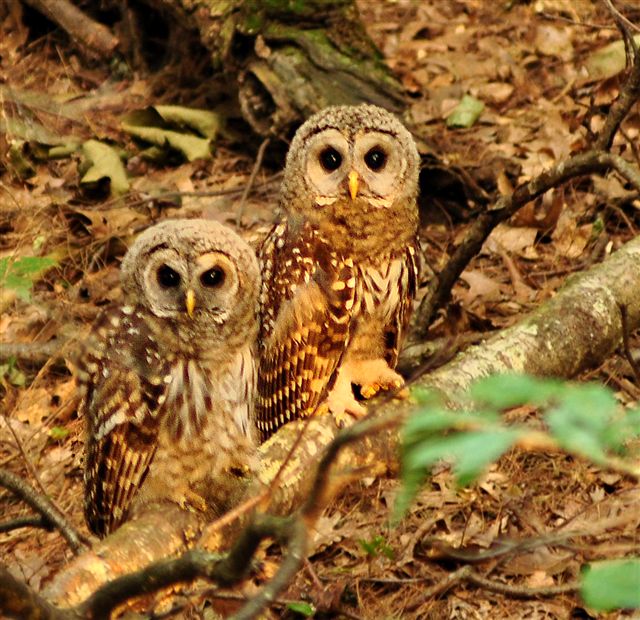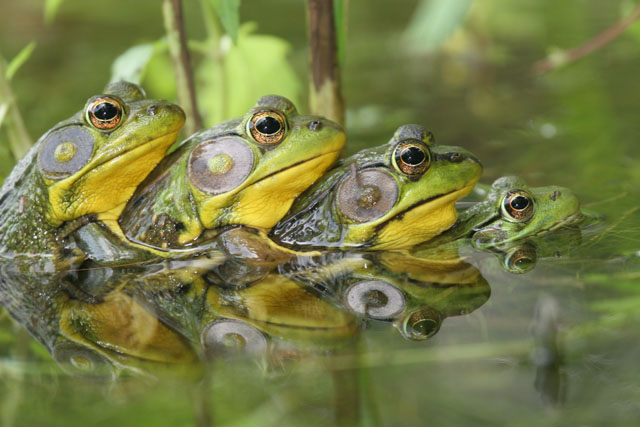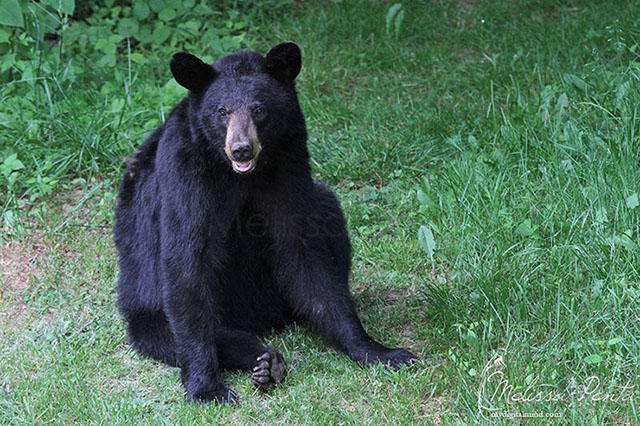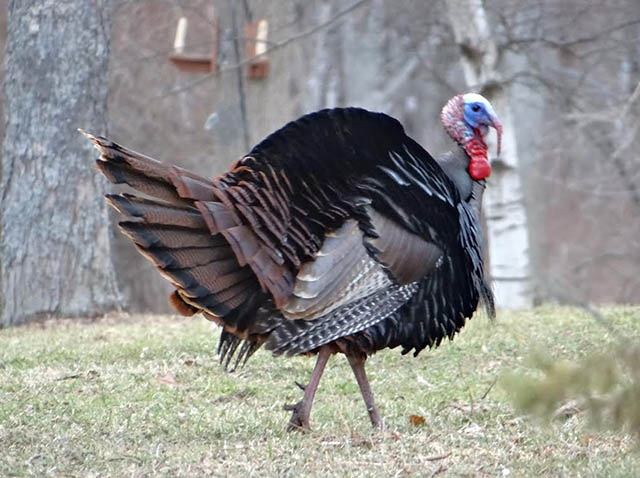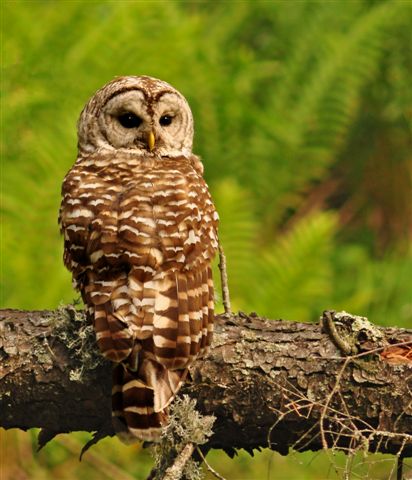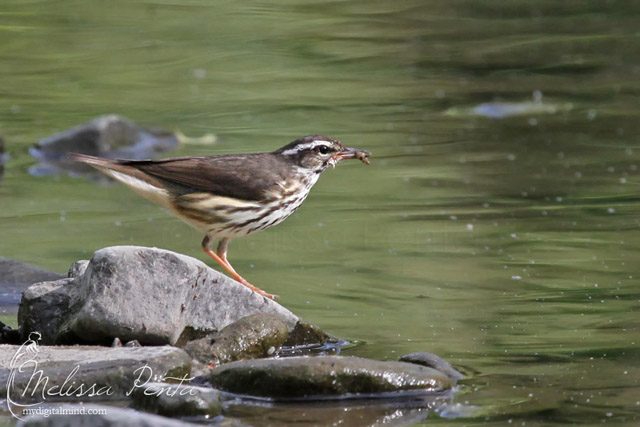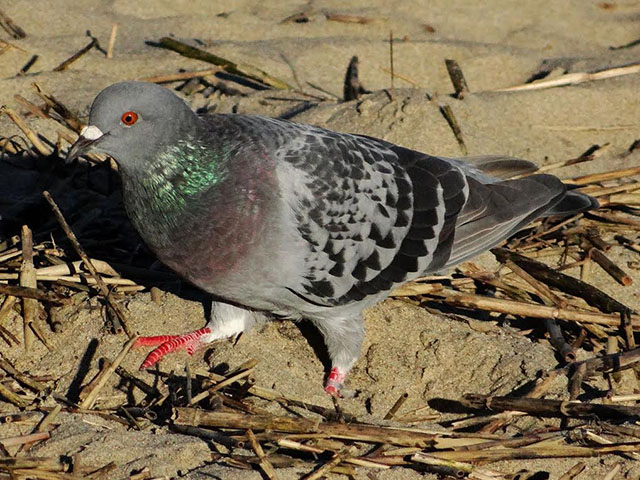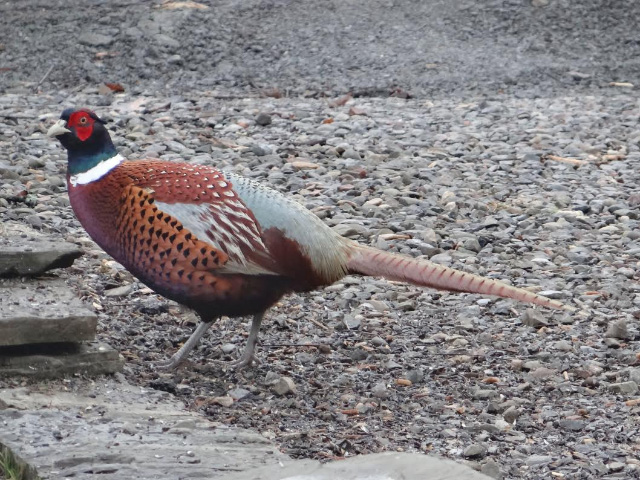Cayuga Lake
Had the pleasure of leading the Broome County Naturalist’s Club Field trip to Cayuga Lake today. We started at Stewart Park and saw mostly Canada Geese, Mallards, few Black Ducks, American wigeon, Bufflehead, many hooded mergansers, some displaying, 1 Ring-Necked Duck, 2 green-winged teal, a few Scaup sp (probably lesser), 1 ruddy duck, pied-billed grebe, distant Common Loon, all three common gull species. There was also a wood duck and three double-crested cormorants on the red lighthouse jetty. Nothing unusual but still nice to see our common birds out there.
Next stop was Myer’s point. The highlight here was a flock of BRANT heading south. Got great views of these guys. Very cool. This, along with the many flocks seen after Sandy, makes for the most I have ever seen of this species on Cayuga Lake in a season. Otherwise we had typical common birds from Myer’s.
Next stop was Long Point State Park and the big story was the wind. BRRRR. The best bird here was a very low flying adult Bald Eagle. The eagle was only 5 to 10 feet above the lake surface as it flew south. Never saw one flying so persistently low. The bird was not chasing ducks or gulls. It just flew low to south and out of sight. Otherwise, not much here. Just a few Canada Geese, mallards, black ducks, common loon etc.
Stopped at the Aurora Boathouse next. Again mainly common species. Best birds here were 2 HORNED GREBES. We also began to see many many SNOW GEESE to the distant north.
North Mill Pond had a nice variety of ducks that you can see close up. Great for groups. We got excellent views of many GADWALL, about a dozen REDHEAD, among other common ducks, like Mallard and Bufflehead. Then before we left here, it began. Flock after flock after flock of SNOW GEESE came from the east and were flying overhead toward Cayuga Lake. We estimated about 5000! They were still moving overhead when we left.
Quick stop at Harris Park and again we could see flock after flock of SNOW GEESE this time heading south and lowering toward what it looked like to be Lower Lake road on the west side of the lake.
After lunch, we went to lower lake road and hit the jackpot of SNOW GEESE. There were many thousands. We saw some blue form too. They also were continuing to stream in from the west and the north by the hundreds. It was very interesting to see an overhead flock descend from a couple hundred feet up. They were doing acrobatic moves, twisting and turning to lose height as they eventually made it to the lake surface. A boat eventually scared up the masses and it was a deafening roar as they took off. It was a true spectacle that never ceases to amaze me. We all enjoyed this immensely. Melissa Penta from our group took a few photos and some videos. You can see them here….
http://www.flickr.com/photos/mydigitalmind/
Here is the one video of the huge takeoff…
http://www.flickr.com/photos/mydigitalmind/8235338643/in/photostream/
I occasionally looked for Ross’s Goose but kept get distracted by the overall spectacle of the numbers. We did not positively ID any of these but I am sure there probably were some in there given the shear numbers.
There also were other species of ducks mixed in, including american wigeon, 1 ruddy duck, few lesser scaup, bufflehead. We also had a lone american coot.
Sheldrake was very windy and we saw just a few common loons there.
All in all, a nice day to be out by the lake despite the wind. We totaled 42 species. Not bad for not birding in the woods or fields.
Dave Nicosia
Posted in
Field Trip Report |
Comments Off on Field Trip Report – December 2012
Montezuma and Vicinity
I had the privilege today of leading our local bird club to Montezuma wetlands complex. The focus for this trip was shorebirds. My goal was to get good looks at many different species for the group, and point out key field marks and behaviors. We had 10 people and saw 12 different species of shorebirds and other great birds that Montezuma has to offer.
Our first stop was the visitor’s center and right off the bat we got great looks at both GREATER and LESSER YELLOWLEGS close together and the difference in size, and bill length was obvious. We also got a decent look at a PECTORAL SANDPIPER again with nice contrast on the breast very evident. Then we came upon 4 DOWITCHERS. 3 were SHORT-BILLED but there was one that is a candidate for a LONG-BILLED. The bird was more cinnamon and had the white half eye ring under the eye. But I am not sure on this one. It could be the prairie race of the SBDO. A couple CASPIAN TERNS and a gorgeous adult BALD EAGLE flying fairly low really got us off to a great start.
We then did wildlife drive and came upon around 30 or so KILLDEER, many young ones, at LaRue’s and on the main pond we had a bunch of AMERICAN COOTS. The new shorebird area again was disappointing as we only found a few yellowlegs and 1 or 2 killdeer.
Benning marsh was excellent. Close views, many species. Great for studying plumages and learning field marks. We had a SEMIPALMATED SANDPIPER and LEAST SANDPIPERS and there was no doubt. You could easily see the semi was much grayer and a bit larger than the more brownish/almost rufous LEASTs. We also had several SOLITARY SANDPIPERS, SPOTTED SANDPIPERS, both yellowlegs again, and a very well camouflaged WILSON’S SNIPE. There were many PECTORAL SANDPIPERS here too with great views. We had both KILLDEER and SEMIPALMATED PLOVERS…. another good comparison. In addition, there was a female BLUE-WINGED TEAL which was a good challenge for everyone.
Then we went to Towpath Road and the shorebird spectacle continues at Knox-Marcellus marsh… unfortunately it is a distant spectacle. But there were enough birds close enough and the heat shimmer was not that bad that we saw many of the same birds that we had at Benning Marsh but they were a little more distant. Best birds here were 4 AMERICAN GOLDEN PLOVERS. They were in varying stages of molt with one that was still hanging on to quite a bit of black on the belly. The lighting was awesome here and you could easily make out the white stripe above the eye on all birds. At first, we found 3, but then we were joined by Ann Mitchell, Dave Nutter and Bob McGuire. Bob found 1 more so there were 4.
There were also 3-4 SANDHILL CRANES that flew in way over by east road.
I also had a false alarm on the yellow crowned night heron. While watching the plovers, one of my very observant birders found this brownish heron with a lot of streaks. I got a quick glimpse and it had a red eye and I immediately thought YELLOW CROWNED NIGHT HERON but it flew away. So with Dave, Ann and Bob and 10 other birders, the bird showed up again…well BLACK CROWNED NIGHT HERONS also have red eyes!! That was my bad. For some reason I though only imm. YCNH had red eyes. This bird had a lighter bill and was more streaker and was lighter overall. So it was an imm. BCNH. It was good to see for my group that we all make mistakes and it is OK and a great way to learn. But if you find a bird that is rare either have a photo or take good field notes because you will have to defend your report.
In the distance on high power with your scope, you could see there were a lot more shorebirds at K-M marsh. A lot. There were probably several more species that we missed. I saw that Ann, Dave and Bob got a BUFF-BREASTED SANDPIPER later in the day from East Road which is awesome. We did not find any of the phalaropes that had been seen recently.
Our last stop was Van Dyne Sporer Road and we saw a lot of AMERICAN COOT, COMMON GALLINUE, PIED BILLED GREBES, RING BILLED GULLS and several CASPIAN TERNS. An AMERICAN BITTERN flew in and landed in the reeds but only a few in the group got to see this bird. There was also a beautiful NORTHERN HARRIER coursing low over the marsh. Another bird of note were thousands and thousands of RED-WINGED BLACKBIRDS. I tried and failed to find that “needle in a haystack” yellow headed blackbird. Well the one last spring in Endicott is enough to tie me over for now!! But I bet someone finds one or two of these birds in this huge flock in the coming weeks.
There is no doubt that fall migration is really picking up. Good birding to all!!
Dave Nicosia
Posted in
Field Trip Report |
Comments Off on Field Trip Report – August 2012
My final entry…Field Trip Report for Roy H Park Preserve / Shindagin Hollow
On June 2, 2012, I led my final trip as the field trip chairperson for the Broome County Naturalists’ Club. For me, it was the finest trip of all the twenty nine trips that I led. As I walked along, I was reflecting on all the good times I have had while holding this position. I have walked with the finest of naturalists, the finest of birders and the finest of friends anyone could ask to spend time with. I loved to share the places I have found over the years with my friends, to show them places they may not have otherwise seen. I loved making new friends, sharing my knowledge and in turn learning from them, making myself a better person. Thank you all, that have let me lead you…I will remember each and every one of you.
Despite my mind wandering and reflecting past trips we did see and hear the following birds:
At Roy H. Park Preserve: The most prevalent bird was the Towhee, this is prime Towhee country.
Common Yellowthroats, Female Rose-breasted Grosbeak, Robins, Blue Jays, Yellow Warblers, Grackles, Song Sparrows, Prairie Warblers, Hummingbirds, Crows, Towhees Great Crested Flycatchers, Chickadees, Alder Flycatchers, Oven Birds, Green Heron (H), Catbirds, Chestnut-sided Warbler, Barred Owl (H), Juncos, Black-throated Green Warblers (H), Winter Wren, Scarlet Tanagers (H), Indigo Bunting, Hooded Warbler (H), Chipping Sparrows, Wood Thrush (H), Veery, Field Sparrows (H), Cedar Waxwings, and a Yellow-billed Cuckoo (H).
At Shindagan Hollow State Land: We saw many of the same species at the preserve; these are in addition to them: Orioles, Red-winged Blackbirds, Phoebe, Wood Pewee (H), Tree Swallows, Ravens, Male Rose-breasted Grosbeak, Red Eyed Vireos, Pileated Wood Pecker, and a Red Start.
It has been a good three years. I will continue to scout new locations and lead photography trips for the club and of course, attend future field trips with the new field trip chairperson. I just cannot give up the grasp nature has on me and miss all it has to offer. I have to be out there!
Dan Dunn,
Broome County Naturalists’ Club Field Trip Chairperson.
Posted in
Field Trip Report |
Comments Off on Field Trip Report – June 2012
Hawthorn Orchard/ Cornell Lab of Ornithology, May 6, 2012.
With all of the e-mails about the Hawthorn Orchard warbler sightings, it was not a surprise to see as many birders as we did birds. With the orchard being as thick as it is, you would see a flash of color or a movement only to find out, it was another birding group and not the Northern Parula you just heard. After a short while our strategy was to stay put and let the birds come to you.
We saw and/or heard the following at the orchard:
Mocking bird, Turkey Vulture, Starling, White-crowned Sparrow (H), Catbird, Meadow Lark, Grackle, Blue Heron, Northern Cardinal, Robin, Red-bellied Woodpecker (H), Mourning Dove, Barn Swallow, Common Yellow Throat (H), Northern Parula, Crow, Blue Jay, Canada Geese, Tit Mouse, Chickadee, Gold Finch, Black Throated Green Warbler (H), Ruby Crowned Kinglet, Nashville Warbler, White Throated Sparrow (H), Blue-winged Warbler, Blackburnian Warbler, Red Start (H), Black-throated Blue Warbler (H), Baltimore Oriole, Song Sparrow, Red-winged Blackbird, House Sparrow, and a Kestrel hawking in the field.
After a quick lunch at Burger King and enjoying a few comical Mocking birds we headed over to the Cornell Laboratory of Ornithology:
Here we saw many of the same birds, even the ones we heard at the orchard, but included these additions:
Tree Swallow, Yellow Warbler, Downey Woodpecker, Least Fly Catcher, Red-tail Hawk, Flicker, Ovenbird, Magnolia Warbler, Yellow-rumped Warbler, Palm Warbler, Hairy Woodpecker, Great Crested Flycatcher, Blue-headed Vireo, Yellow-bellied Sapsucker, Phoebe, House Wren, and Mallards.
We made a brief stop at Shindagan Hollow State Forest on the way back to see the millions of trilliums in bloom. We saw a few of the same warblers and picked up a Yellow Throated Vireo.
Not a bad day of birding with many quality looks. The area we birded was only a small portion of the orchard and just the trail around the pond at the lab.
Dan Dunn
Broome County Naturalists’ Club Field Trip Chairperson.
Posted in
Field Trip Report |
Comments Off on Field Trip Report – May 2012
Greenwood Park/ Nanticoke Lake, April 28, 2012
To me, weather plays a big part in what we see on our field trips. Today was identical to our Dryden Lake trip a few weeks ago. Bright sunny skies, a sharp north wind that cut right through you, numbing the hands making a scribbled list of our sightings. Also, similar results….a lot of silence in the woods leaving us to wonder, “Where are the Warblers”.
I want to welcome two of our newer members, Christina and Al. The Savannah Sparrows we saw were a first for both of them. They both had a good time and are planning to attend future trips.
We did see the following:
Robins, Juncos, Pine Warblers, Chickadees, Mallards, Chipping Sparrows, Brown-headed Cowbirds, Ospreys, Yellow-rumped Warbler, Blue Jays, Red-winged Blackbirds, Yellow-bellied Sap Suckers, Broad-winged Hawk, Red-bellied Wood Peckers (H), Crows, Geese, Brown Creeper, Blue Heron, Tree Swallows, Flickers, Song Sparrows, Phoebe, Turkey Vultures, Cormorants, Pileated Wood Pecker, Field Sparrow (H), and a great spot by Christina….a few Savannah Sparrows.
We also had a mysterious, eerie call. We were deep in the woods on our way to the back swamp when we heard a sound similar to a hoot with an uprising whoop. We heard it five or six times. It was jokingly suggested to be “Bigfoot” but we could not confirm a sighting. Al, is trying to ID it through the McCaulay Library of sound on the Cornell website.
Our platter birds of the day were the Pine Warblers and Ospreys. The Pine Warblers were almost constant in their calls. We saw one Osprey at Greenwood Park and seven of them at Nanticoke Lake. Three of them were soaring and fishing and four of them on a migrating northerly glide.
Despite the cold and not that much bird activity, we had a good time being out with friends with similar interests.
Florence Shelly Preserve, April 14 2012.
I want to thank Debbie for volunteering to be trip leader to Florence Shelly Preserve, Thompson PA. This is a trip that was a result of a request I made to our members a couple of years ago, “Where would you like to go for a field trip”? I also want to thank Ruth for keeping track of our list. We had to “bird every bird”, as it was unusually quiet in the woods. We hiked along a trail that went along a farm field, hardwood forest mixed with Red Pine, Tamarack and Hemlock Grooves, then down to the wetlands. The woods were full of giant rock outcroppings typical of the Pennsylvania landscape. It was of interest to me, looking (carefully) around these outcroppings for rattlesnakes, but none were to be found. Our platter bird was the Ruby-crowned Kinglet giving us many close looks and it’s beautiful song.
We did see the following:
Red-tailed Hawk, American Crow, Red-winged Blackbird, Rock Pigeon, Goldfinch, Robin, Canada Goose, European Starling, Ring-necked Duck, Eastern Bluebird, Common Merganser, Song Sparrow, Mourning Dove, Blue Jay, Eastern Meadowlark (h), Black Capped Chickadee, Ruffed Grouse, Warbling Vireo (h), Ruby-crowned Kinglet, Junco, Yellow-bellied Sapsucker (h), Turkey Vulture, Northern Flicker, Winter Wren, White-breasted Nuthatch (h), Swamp Sparrow, Brown Creeper (h), Tree Swallow, and a Spring Azure butterfly.
Dryden Lake, April 6, 2012.
Not a cloud in the sky, but a north wind that would cut right through you! We were hoping for what is known as the “Dryden Lake Effect”, a fall out that occurs after the passing of a cold front in March or April. It was cold alright, but not a cold front passing. We walked along the “Jim Shug Trail”, an old railroad bed maintained for hiking and biking. It has several habitats along its route so we should see the resulting birds in their habitat.
We did see the following:
Canada Goose, Mallard, Ring-necked Duck, Long-tailed Duck, Bufflehead, Pied-billed Grebe, Horned Grebe, Great Blue Heron, Osprey, Cooper’s Hawk, Red-tailed Hawk, Mourning Dove, Red-bellied Woodpecker, Downy Woodpecker, Northern Flicker, American Crow, Tree Swallow, Black-capped Chickadee, American Robin, European Starling, Song Sparrow, Red-winged Blackbird, Common Grackle, and Brown-headed Cowbirds.
Some of the notables, the Osprey flying with its fish lunch, three Red-tail hawks soaring over head at the same time, one with a rodent lunch, and the Long-tailed Duck was a life bird for me.
Dan Dunn
Broome County Naturalists’ Club Field Trip Coordinator.
Posted in
Field Trip Report |
Comments Off on Field Trip Report – April 2012
March 17 – Avian Road Trip – Back Roads of Broome
Forcast: Sunny, mid 60’s. (Nice!)
Actual: FOG! Fog so thick you couldn’t see two hundred yards. (Not so nice).
Birding visibility…less than fifty yards. (Terrible!)
This changed my entire route hoping the fog would lift. We ended up going to Chenango Forks, over to Castle Creek, Whitney Point Reservoir, Lisle, Smith Road, Edwards Hill over to Arnold Road and ended up walking in, to Nanticoke Lake.
What did aid us, was the ability to drive slowly and listen intently for the sounds of spring. This was the trip to hear and see more Meadow Larks than I have ever seen in one day. We also lost count of how many Red-tailed Hawks we did see. We were informed by some fishermen, “Of a white kinda lookin duck”, as we presumed, a male Common Merganser.
I want to thank Ruth for keeping track of what we did see.
Common Mergansers, Red-winged blackbirds, American Crow, Rock Pigeon, Great Blue Heron, Black Duck, Mallards, Canada Geese, Am. Coot, Robin, Black Capped Chickadees, Bald Eagle–immature 4th year, Cardinals, European Starlings, Song Sparrow, Blue Jays, Common Grackle, Tree swallows, Juncos, Meadowlarks, Red-tailed Hawks, Turkeys, Mourning Doves, Kestrels, Goldfinch, Red-shouldered Hawk, Golden Eagle, Turkey Vulture, Downey Woodpeckers, and no Leprechauns. We also heard Blue Birds, Killdeer, and Red-bellied Wood Peckers,
The high light of the trip was at Nanticoke Lake. The fog had finally lifted and we heard the distinct call of a Red-shouldered Hawk but had a hard time pin pointing its location. It was loud and clear, then weak. Finally looking straight up we spotted the Red-shouldered Hawk dive bombing and harassing a Golden Eagle!
It always makes me feel good to take people out and have them get a life bird or two. Melissa was able to get three life birds!
Hope you can join us on one of our future trips and have the fun we had today!
March 24 – BU Nature Preserve
What was predicted to be a rainy day turned out pretty nice with nothing more than being cloudy. My record still stands as not having a trip turn out to be a rainy disaster.
With one of the earliest springs many of us have witnessed, twelve of us headed into the preserve with expectations of seeing some earlier than normal returning migrants. We did see some birds that were earlier than usual, but nothing totally surprising. We did see the following:
A Blue Jay calling imitating a Red-shouldered Hawk, Crows, Red-winged Blackbirds, Mourning Doves, Song Sparrows, Cardinals, Phoebes, Brown Headed Cow Birds with the male boldly displaying, Robins, Chickadees, many Turkey Vultures, Canada Geese, Mallards, Gold Finches, Flickers, Juncos, Downey Woodpeckers, Grackles, Catbird, White Breasted Nut Hatches, Ruby-Crowned Kinglets, Brown Creeper (heard), and Pileated Woodpeckers.
The Pileated Woodpeckers gave us exceptional views while we were checking out the vernal pools. With no melt off, or steady spring rains, the pools were rather small this year.
There were twenty to thirty Turkey Vultures rising on the thermals at the same time reminding me of the scene from the Wizard of OZ with all the flying monkeys.
Our next field trip is to Dryden Lake on April 07, 2012. Check out the Gnatcatcher or the web site for details. Hope you can join us!
Dan Dunn,
Broome County Naturalists’ Club Field Trip Chairperson.
Posted in
Field Trip Report |
Comments Off on Field Trip Report – March 2012
On a cloudy, rainy, windy, sunny day, yes, we had all the conditions, five of us headed out to Montezuma via stops along the way at Stewart Park, Meyer’s Point, and Long Point State Park.
Here are the birds from the trip per Fran’s list: On the way we saw Crows, Starlings, Canada Geese, Rock Doves.
STEWART PARK: Double-crested Cormorants, Mallards, Ring-billed Gulls, Great Black-backed Gull, Song Sparrows, Hooded Mergansers, Great Blue Heron, Horned Grebe, Mourning Dove.
MEYERS POINT STATE PARK: Turkey Vulture, Herring Gulls, and Harrier on the way to Long Point State Park which came up absolutely vacant of any birds.
POPLAR RIDGE ROAD: (We stopped in search of the Red-headed Wood Pecker but he was not home), Black-throated Green, Yellow-rumped Warbler, Red-tailed Hawk, IM. Eagle,
MONTEZUMA: Wood Duck, Black Duck, Greater Yellowlegs, Lesser Yellowlegs, Killdeers, Blue-winged Teal, Male Harrier, Adult Eagle, Northern Shovelers, Wilson’s Phalarope, American Coots, Pied-billed Grebes, and a couple thousand Northern Pintails.
MAYS POINT: (By this time, we were facing gail force winds making it hard to even stand let alone look through binoculars without supporting them.) Gadwall, Blue Heron, Harrier, Great Egret.
KNOX MARSH: Snow Geese, Greater Black-backed Gull, Eagles 2 adults and one IM. feeding on what looked like a dead goose. Northern Pintail Ducks, Harrier, Canada Geese, Trumpeter Swan, Great Egret, Tree Swallow. It was comical to watch the eagles fly into the wind going no where fast like being on a treadmill.
DEANS COVE: 3 Common Loons, Raft of Cormorants, Chickadees, Cardinal and Blue Jay
Wish you could have been with us!
Dan Dunn
Broome County Naturalists’ Club Field Trip Chairperson
Posted in
Field Trip Report |
Comments Off on Montezuma Field Trip Report 2011
Sept 07—The start of the BIG FLOOD. With a little rain we started out to find the birds. It soon became a lot of rain. The rain was too much for us and we quit early. We did get 9 Semipalmated Plovers at the Airport that was by far the highlight. We ended up with 15 birds. Highlight birds were: Snow Goose, Kingbirds, and Wood Duck.
Sept 14—Aqua Terra With all the road closures we decided to stay close to home. As we drove into the Park we saw a Scarlet Tanager right next to the road. Getting out to get a better look we also got Nashville, Canada Warbler, Magnolia, Golden-crown Kinglet and Red-eye Vireo. Nice stop thanks to the Tanager. Other good birds Hairy, Red-tail and Cardinal.
Sept 21—On the road A pretty slow day. Things just were not cooperating with us today. Then we got 28 TVs at the Leekville marsh, which we quickly found out is on the back side of the landfill. As we passed the landfill, we heard the call of a Fish Crow and then we saw a lot of Fish Crows. As we left that area, a Raven sent us away with a nice loud CROAK. Scarlet Tanager and Brown Thrasher were added to our highlights.
Sept 28—Dorchester Park Dorchester was very quiet. The surrounding roads did, however, give us the best birding of the month. We got 40+ birds. A nice flock of 8 Meadowlarks, Cedar Waxwing to the tune of 200+, well over 3 dozen Kestrels, two male N. Harriers. Then we added some nice warblers, like Magnolia, Nashville, Yellow-rumped, Black-throated Green and Palm.
Dan Watkins, Weed Walk Chairperson
Posted in
Weed Walk Diary |
Comments Off on Weed Walk Diary – September 2011
Aug 03–Murphy’s and Oakley Corners
The three best birds today were a Great Egret at Murphy’s and Pileated Woodpecker and Prairie Warbler on Cornell Hollow. Also, Hermit Thrush, 3 other Warblers, and Indigo Bunting.
Aug 10–Broome Roads
Starting at the Airport we got a Snow Goose, Least Sandpiper and Lesser Yellowlegs. Wood Duck, Kestrel, Sapsucker, Indigo, Bobolink and Kingbird rounded out the highlight birds.
Aug 17–Vestal Parks
Mittendorf Park gave us a small group of birds like House Wrens and Nashville Warbler. Old Man softball game was going on at Moore Park, but we watched the Great Egret and Snow Goose. Least Sandpiper, Waxwing, Flicker and Cardinal were some of the highlights.
Aug 24–Sky Lake
Always a nice walk around the lake. While hiking we got Wood Thrush. Kingbird and several Warbler. The best look was a Black-throated Blue. We hit our resident P. Falcon for the 160th bird of the year. The day ended with a nice Bald Eagle over NYSEG.
Aug.–31–Dorchester
We hit Dorchester, but alas, it was very quiet. Kale St. gave us Scarlet Tanager and a bright B. Oriole. Counted two dozen Kestrels. A hummer and Kingbird helped make the day.
Dan Watkins
Posted in
Weed Walk Diary |
Comments Off on Weed Walk Diary – August 2011
Broome Naturalists’ Club Field Trip report for Oakley Corners State Land
For our last field trip of the spring season we went to Oakley Corners State Land. As usual for June, the leaves were out in full and made visual identification very difficult. So we turned to Avian Auditory Identification and did quite well.
Here is what we found:
Cardinals, Chipping Sparrows, Mourning Doves, Yellow-bellied Sapsuckers, Robins, Yellow Rumped Warblers, Baltimore Orioles, Red Eyed Verios, Chickadees, Brown Creeper, Oven Birds, Red Winged Black Birds, Spotted Sandpiper, Grackles, Mallards, Belted Kingfisher, Red Breasted Nuthatch, Great Blue Herons, Blue Jays, Crows, House Wren, Purple Finch, Catbirds, Juncos, Pine Warblers, Black-throated Blue Warbler, Chestnut Sided Warbler, Indigo Bunting, Hermit Thrush, Veery and a Piliated Wood Pecker.
BUT, the bird of the day was the pesky mosquito! Up around the ponds they were not othersome. Then we went down the trail on the north side of the state land and were swarmed by them. You would bring up your binoculars and see four or five on your hands at once!
Join us in September when we make our annual trip to Franklin Mountain and Montezuma Wild Life Refuge.
Dan Dunn
Naturalists’ Club of Broome County, Field Trip Chairperson
Posted in
Field Trip Report |
Comments Off on Field Trip Report – June 2011
← Older posts
